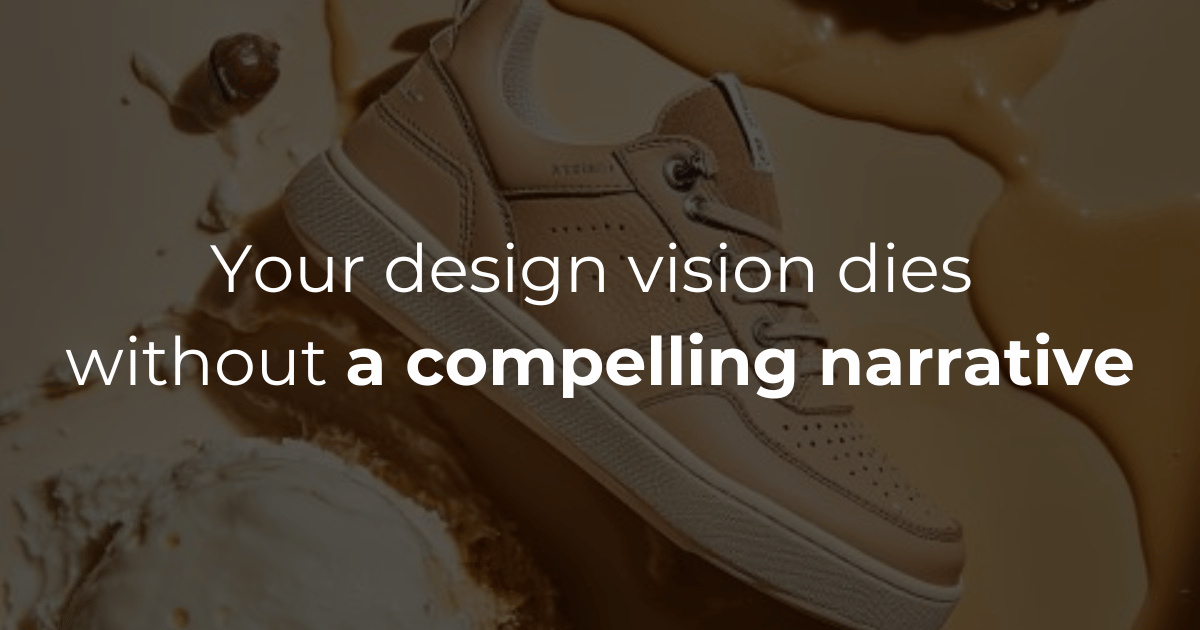- Creative Caffeine by Erin Bornstein
- Posts
- The Day I Stopped Designing Shoes
The Day I Stopped Designing Shoes
And started creating experiences that sell themselves

The Day I Stopped Designing Shoes
ReBorn Designs / Read Time: 5.7 min
Thrown into the deep end without a life jacket
I was weeks into a freelance contract when Sperry handed me the impossible:
Design their entire Resort Collection—45+ SKUs, custom prints, and a fresh aesthetic that still needed to feel like "Sperry."
I wasn't ready.
I had just started with the brand. I had limited time. The pressure was crushing.
But this project taught me the one skill that separates successful designers from those who burn out and fade away.
It's not what you think.
Color theory? Crucial.
Technical skills? Important.
Material knowledge? Necessary.
But none of these saved me when I faced sleepless nights, endless revisions, and the weight of a season riding on my shoulders.
What turned everything around wasn't more design expertise.
It was storytelling.
If you're struggling to get your designs approved or wondering why your technical brilliance isn't translating to career advancement, here's the framework that transformed my approach to high-pressure projects.
Book a free Discovery Call to learn how we can help your footwear brand tell better stories.
Thank you for an amazing session! I learned a great deal and found myself thinking about how to apply it during my own presentations. I enjoyed how you made the roundtable feel like a discussion but an organized discussion.
—-Lily, a Sport Product Design Grad Student, from storytelling roundtable at Stride 2025

Stop designing shoes. Start creating experiences
I was drowning in SKUs and brand guidelines when it hit me.
I'd been designing shoes, when I should have been crafting an experience.
Once I shifted my focus from individual products to the overall narrative—a lively, carefree Miami beach vacation translated into color, pattern, and form—everything flowed.
The designs weren't just aesthetically pleasing; they were chapters in a compelling story.
This narrative-first approach didn't just save the collection. It saved my career.
The Resort Collection was a hit. I earned Sperry's trust. They asked me to lead the next season's Resort Collection, too.
When you root your work in a compelling narrative, it connects with consumers and stakeholders alike.
3 elements for design presentations:
Whether you're presenting to executives or pitching to clients, this three-part framework we use at ReBorn Designs will transform how your designs are received:
1. Start with the "Where"
Before showing a single sketch, establish the setting:
What environment will these shoes exist in?
What world are you inviting people into?
What feeling should they evoke?
For our Miami-inspired collection, I opened presentations with vibrant mood boards showcasing not just colors but lifestyle moments that captured the essence of a resort experience.
2. Introduce the "Who"
Your designs need characters:
Who is wearing these shoes?
What are they doing?
What do they value?
I created customer personas with specific vacation scenarios, making the end-user tangible to everyone in the room. This wasn't abstract demographic data—it was storytelling.
3. Reveal the "What"
Only after establishing the world and its characters should you present:
The design solutions
The technical features
The product details
By the time I showed the actual shoes, decision-makers were already immersed in the narrative. They weren't just evaluating products; they were considering whether these designs belonged in the story we'd already built together.
Transform your next design review in under 10 minutes
Before your next presentation:
Create a one-sentence story for your collection
Develop 3-5 lifestyle images that capture the feeling
Script your opening to focus on experience, not products
Present designs as solutions to narrative needs, not just aesthetic choices
When I approached my second Resort Collection for Sperry, I didn't just have confidence—I had a process.
With my storytelling framework in place, I pushed creative boundaries. Some designs broke conventional budget constraints, but the most impactful ones defied the rules strategically because they served the narrative.
Your Turn: What story are you telling?
Next time you're stuck on a design challenge, ask yourself:
What's the narrative behind these products?
Who's the main character in this story?
What world am I creating?
Don't wait for approval. Create stories that make your ideas impossible to ignore.
Cheers!
Erin

Powered by ReBorn Designs
PS: If you’re ready for more, here are other ways I can help:
If you have any questions, reply to this email.
Need more guidance? Hop on a Discovery Call & let’s talk more.
Follow me on LinkedIn for bite-sized tips throughout the week (free)